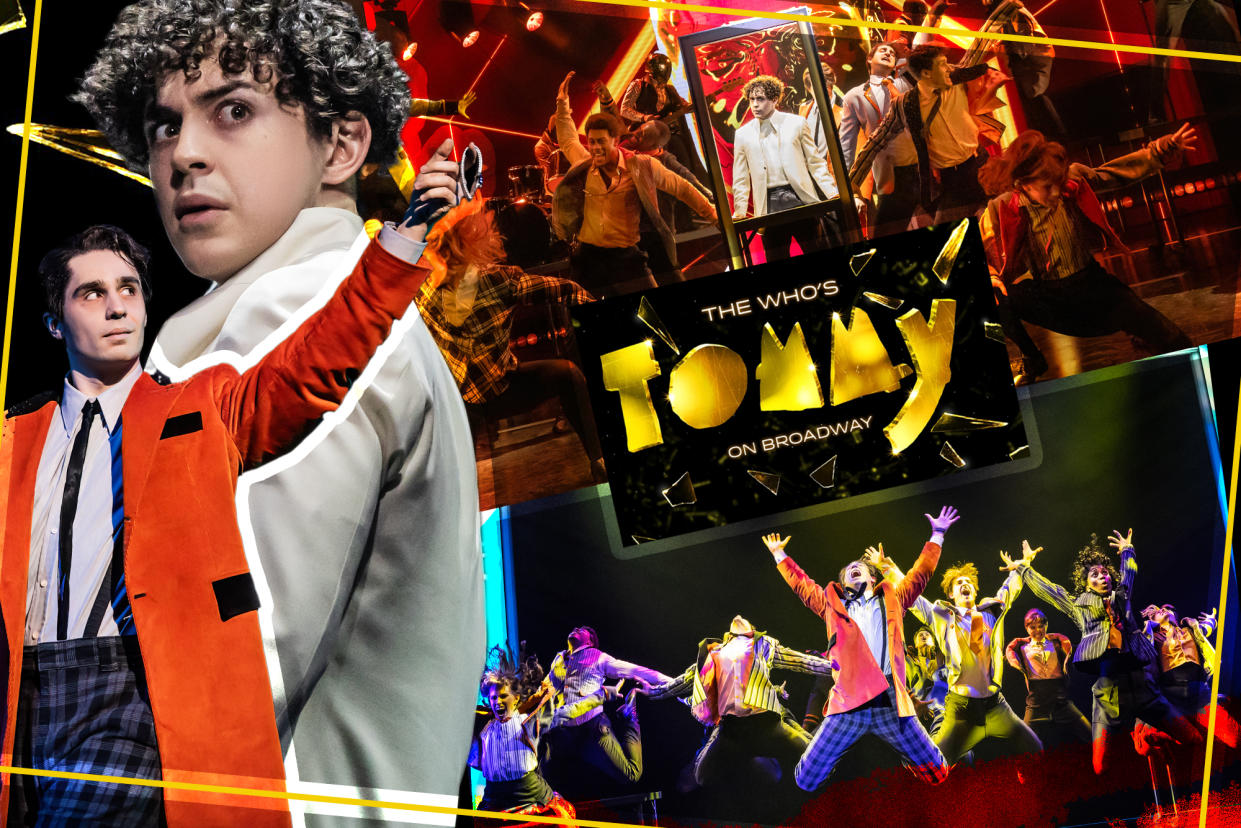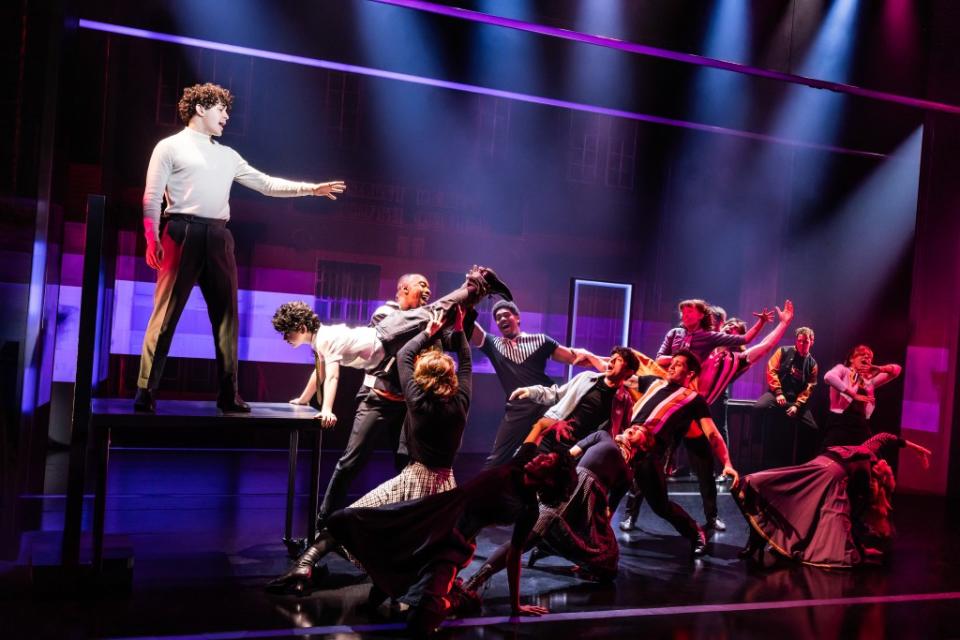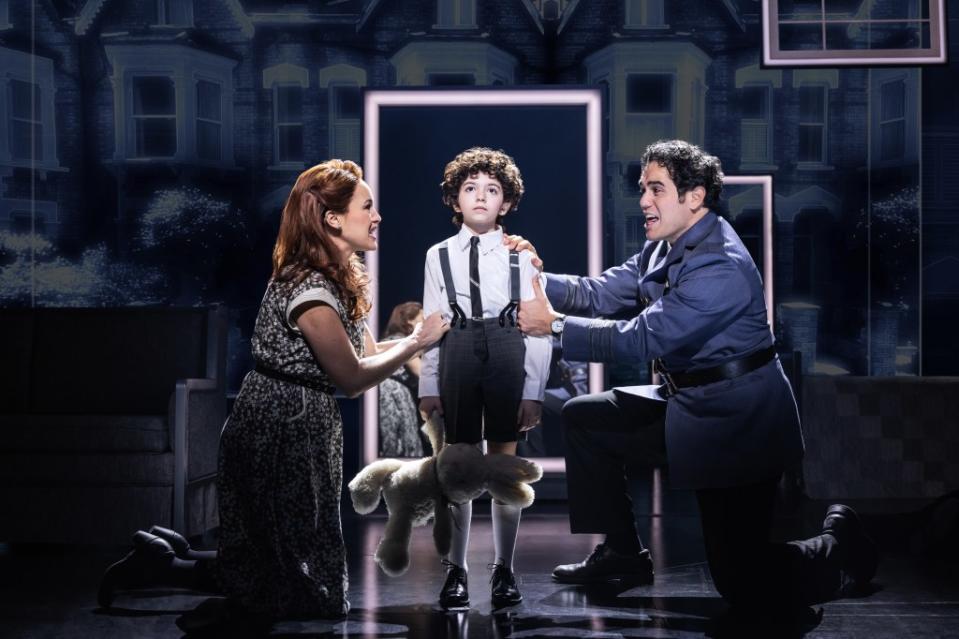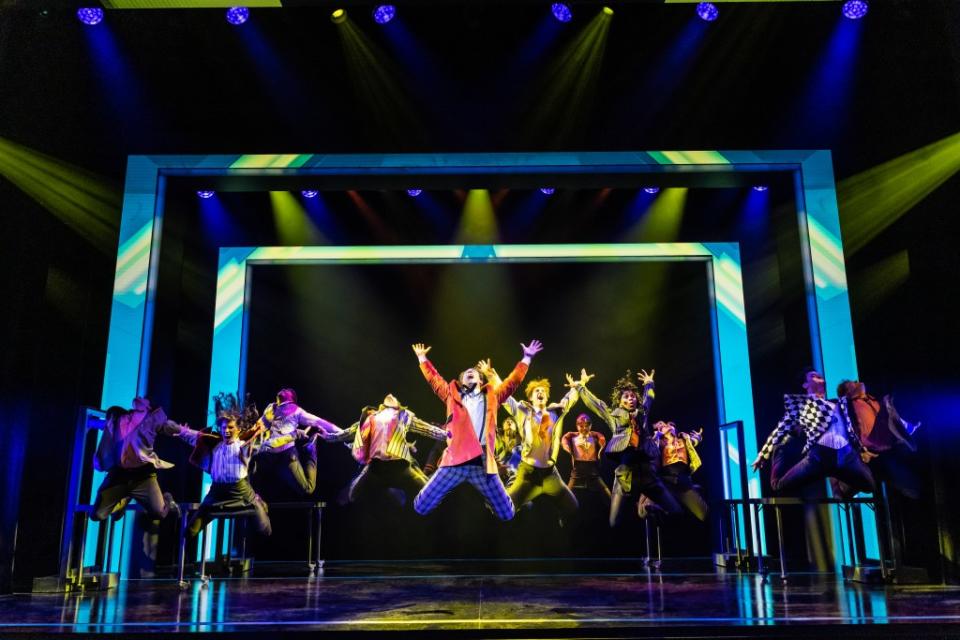‘The Who’s Tommy’ Broadway review: 4 stars for a galvanizing rock revival

Theater review
THE WHO'S TOMMY
Two hours and 15 minutes, with one intermission. At the Nederlander Theater, 208 West 41st Street.
Little Tommy Walker, that “deaf, dumb and blind kid” who sure plays a mean pinball, may be off in a quiet vibration land, but there’s nothing low-volume about “The Who’s Tommy” on Broadway.
The quaking revival of Pete Townshend’s seminal rock opera, which opened Thursday night at the Nederlander Theater after nearly three decades away, really is an espresso martini of a show after a chamomile-tea season of musicals.
Everything about this exhilarating production shakes you awake and leaves you buzzed: Knockout singing, superbly inventive stagecraft and a star-making performance from 24-year-old Ali Louis Bourzgui as the Pinball Wizard that’s the most exciting New York stage debut in years.
I hope the Nederlander’s carpets are regularly vacuumed. Because for two hours and 15 minutes, my jaw became all too well acquainted with the floor.
Don’t lazily dismiss “Tommy” as a nostalgia trip for Baby Boomers, either. Townshend’s imaginative and proudly strange show, about a four-year-old boy who loses his senses of sight and hearing after traumatically witnessing a murder, only to later wind up an arcade superstar, is an ideal concoction for our creativity-starved moment.
Composed back in 1969 when music was still about art, not algorithm, “Tommy” has the edge and originality of today’s intimate gems that critics go gaga for — only with infinitely better tunes audiences love, such as “Sensation, “I’m Free” and “Listening to You.”

However, as it was also dreamt up by a rocker who was accustomed to playing adoring stadiums, the resulting musical is on the dazzling scale that ticket-buyers look to Broadway to provide.
Townshend’s sprawling story demands the ambition and fastidious detail of director Des McAnuff, who first staged “Tommy” on Broadway in 1993 and also co-wrote the book. There is not a second of dead air in his latest go-round, which began at the Goodman Theater in Chicago.
Set in World War II-era Britain (and also now in a more nebulous “past” and “future”), Tommy turbulently travels from four-years-old to ten — and then to an even more discombobulating adulthood, being wronged all along the way.
Seeking a cure for their son, his mum (Alison Luff) and dad (Adam Jacobs) cart the boy off to doctors and a last-ditch-effort Acid Queen (Christina Sajous). He’s abused by his wicked Uncle Ernie (John Ambrosino, a perfect creep) and gets bullied by Cousin Kevin (Bobby Conte).
Jacobs and Luff, with soaring voices, give layered portrayals of loving but flawed parents.

And some exceptional child actors play Tommy in his torturous younger years. The character stares blank-faced as he’s moved balletically through space by troubled adults who make every decision for him, for better or worse.
Tommy’s life sucks, and he’s soothingly watched over by his “see me, feel me, touch me, heal me” older self (Bourzgui) in almost “it gets better” fantasy sequences.
The situation briefly improves when he first gets his supple wrists on his favorite game of metal balls and levers — and becomes world renowned.
In a highlight, the trio of Conte, Mark Mitrano and Jeremiah Alsop mesmerizingly wail “Pinball Wizard” and threaten the structural integrity of a 103-year-old theater, with the help of sound designer Gareth Owen. So forceful, their song is.

Of course, fame has its pitfalls, too, and now it’s Tommy’s younger iterations who return to the stage as visions to support him amid grown-up pressures — such as becoming a cult leader with crazed followers like Sally Simpson (Haley Gustafson).
That we all have an inner adult and an inner child is a deeply relatable idea, even in a cuckoosical such as this one.
David Korins’ set of spaceship white-neon frames is more streamlined than past “Tommy’s,” but it’s used so deftly by McAnuff, lighting designer Amanda Zieve and choreographer Lorin Latarro to paint lush and kaleidoscopic stage pictures.
Most wouldn’t call this musical a dance show, but Lotarro’s thrilling choreography makes a case for that category. The moves are wide-ranging — from the foxtrot to the robot — and the phenomenal ensemble dons police helmets, stethoscopes, church robes and dystopian metal masks as they inhabit a dizzying number of never-still roles.

Fantastic as the entire cast is, enough cannot be said of Bourzgui.
The actor is not only a remarkable time-machine find for a trippy sixties classic, with dangerous eyes like those of Malcolm McDowell’s Alex DeLarge in “A Clockwork Orange.”
He’s also got the glam aura of David Bowie and a wholly unique baritone that easily shifts from sensitive to commanding. And, I suspect, from rock operas to traditional musical theater as well.
After the brilliant Michael Cerveris made his Broadway debut as Tommy in 1993, he went onto play towering roles such as Hedwig, Sweeney Todd, John Wilkes Booth in “Assassins” and “Peron” in “Evita,” while originating memorable roles in new musicals like “Fun Home” and “Titanic.”
That’s the sort of “amazing journey” I predict for Bourzgui.
